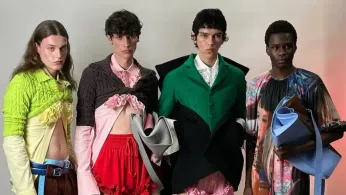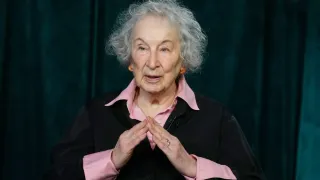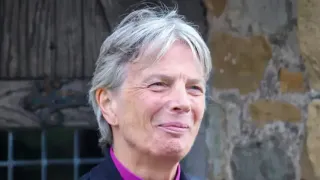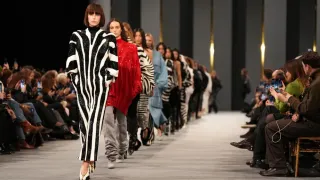
5 hours ago
Martín Lüttecke: Chile’s Queer Vanguard Reimagines Fashion—Sustainably and Boldly
READ TIME: 3 MIN.
Martín Lüttecke is not a household name—yet. But in 2025, his impact on queer fashion and cultural identity across Latin America is unmistakable. Operating out of Santiago, Chile, Lüttecke’s approach fuses sustainability, provocative design, and a commitment to local craft, representing a radical departure from mainstream fashion’s norms. In a region where LGBTQ+ visibility in couture has traditionally faced systemic barriers, Lüttecke’s work is both a celebration and an ongoing act of resistance .
Lüttecke trained in Europe, with formative experience at houses like Haider Ackermann and Wales Bonner, before returning to Chile to launch his own brand. His collections explore themes of body politics, asymmetry, and sustainability, employing local craftsmanship and slow-fashion rhythms as core principles. This practice not only foregrounds ethical production but also directly supports Chilean artisans, making each piece a collaborative ritual rooted in community tradition .
In 2025, the designer’s partnership with Reebok Chile marked a new milestone: a queer-forward capsule collection blending 1990s graphics with body-conscious silhouettes and oversized hombreras—shoulder pads that nod to both historical queer flamboyance and Latinx pop culture. Mainstream brands’ willingness to collaborate with Lüttecke signals a growing recognition of queer perspectives as essential to contemporary fashion’s evolution .
Fashion in Lüttecke’s hands is more than wearable art—it is a vessel for queer community rituals and identity affirmation. His runway shows and editorials feature visible 3D‐printed accents, inclusive casting, and storytelling that foregrounds LGBTQ+ experience. These elements reflect not only the designer’s personal narrative, but also the rituals of self-creation and mutual support found in queer Latinx communities.
For example, his choices in casting—prioritizing transgender people, nonbinary models, and those from marginalized backgrounds—transform the runway from a commercial spectacle into a space of collective affirmation. This practice mirrors the ballroom and drag traditions that have long sustained LGBTQ+ people across the Americas, while recontextualizing them for a Chilean audience .
His embrace of slow-fashion rhythms—designing with patience, emphasizing repair and reuse—draws on rituals of resourcefulness and care central to queer survival under economic and social precarity. By foregrounding these values, Lüttecke’s brand becomes a living archive of community wisdom, embodied in every garment.
While most international coverage of queer fashion focuses on US and European designers, Lüttecke’s work is increasingly cited in Latin American and global media as emblematic of a new wave of queer creative leadership. His pieces have been worn by global influencers and artists, including Pabllo Vittar, Kylie Minogue, and Demi Lovato, amplifying the visibility of queer Latinx aesthetics far beyond Chile .
This attention is not merely stylistic: Lüttecke’s insistence on sustainability and local craft connects queer identity to broader movements for environmental justice and economic equity—issues that disproportionately impact LGBTQ+ communities. By using fashion as a platform for these intersecting causes, he is helping to shape the global conversation about what it means to be queer, Latinx, and visionary in 2025.
Lüttecke’s work exemplifies how ritual and identity are woven into the fabric of queer fashion. His focus on asymmetry and body politics challenges dominant beauty standards and creates space for bodies and identities that are often excluded. The visible 3D-printed accents and provocative silhouettes are not just aesthetic choices; they function as symbols of defiance and imagination, marking the wearer as part of a wider community with shared values and histories .
The designer’s collaborations with local artisans highlight the importance of collective creativity. By elevating indigenous craft and traditional techniques, he honors the labor and stories of those who have long existed at the margins—mirroring the ways LGBTQ+ communities find resilience and joy through shared ritual and artistry.
In 2025, Martín Lüttecke stands as a leading figure in sustainable, queer Latinx fashion, showing how creative expression can reflect and shape community rituals and identity. His brand’s success demonstrates growing global appetite for fashion that is not only visually compelling, but also ethically grounded and inclusive.
As international interest in queer Latinx designers grows, Lüttecke’s work offers a blueprint for the future—one where creativity, activism, and ritual intersect to form new possibilities for self-expression. In a moment marked by increasing anti-LGBTQ+ rhetoric in many countries, designers like Lüttecke remind us that creative resistance is both possible and necessary, and that the rituals of queer community can transform not just fashion, but society itself.






